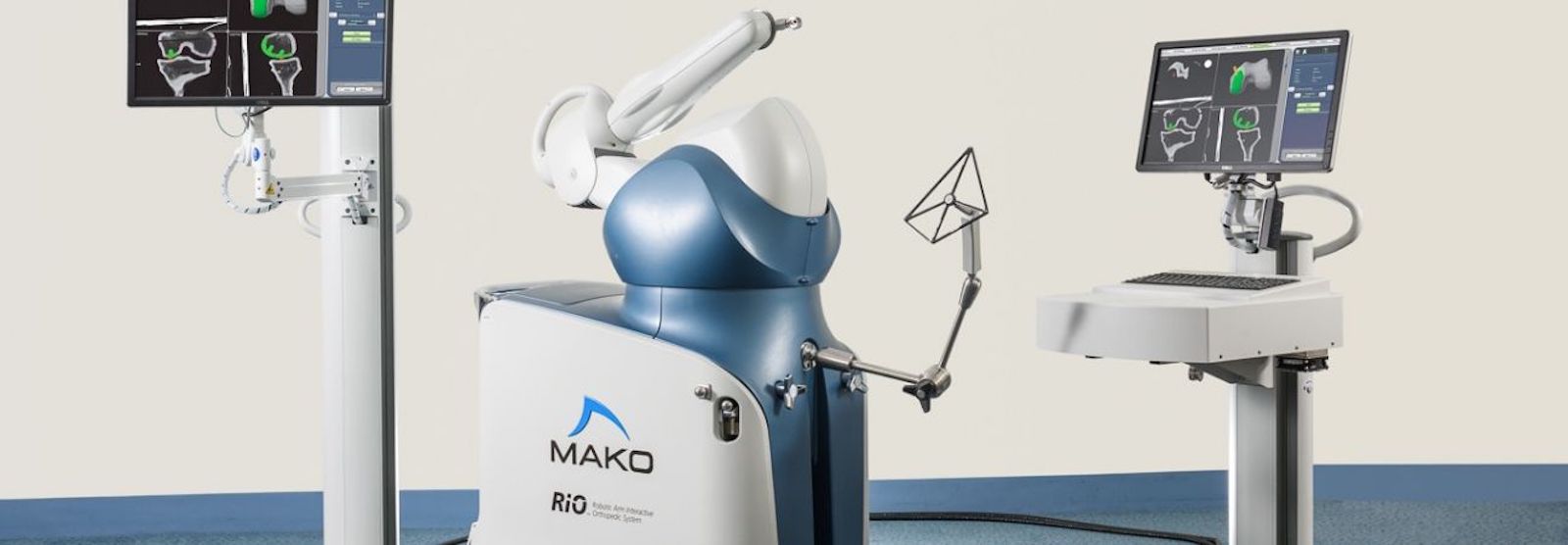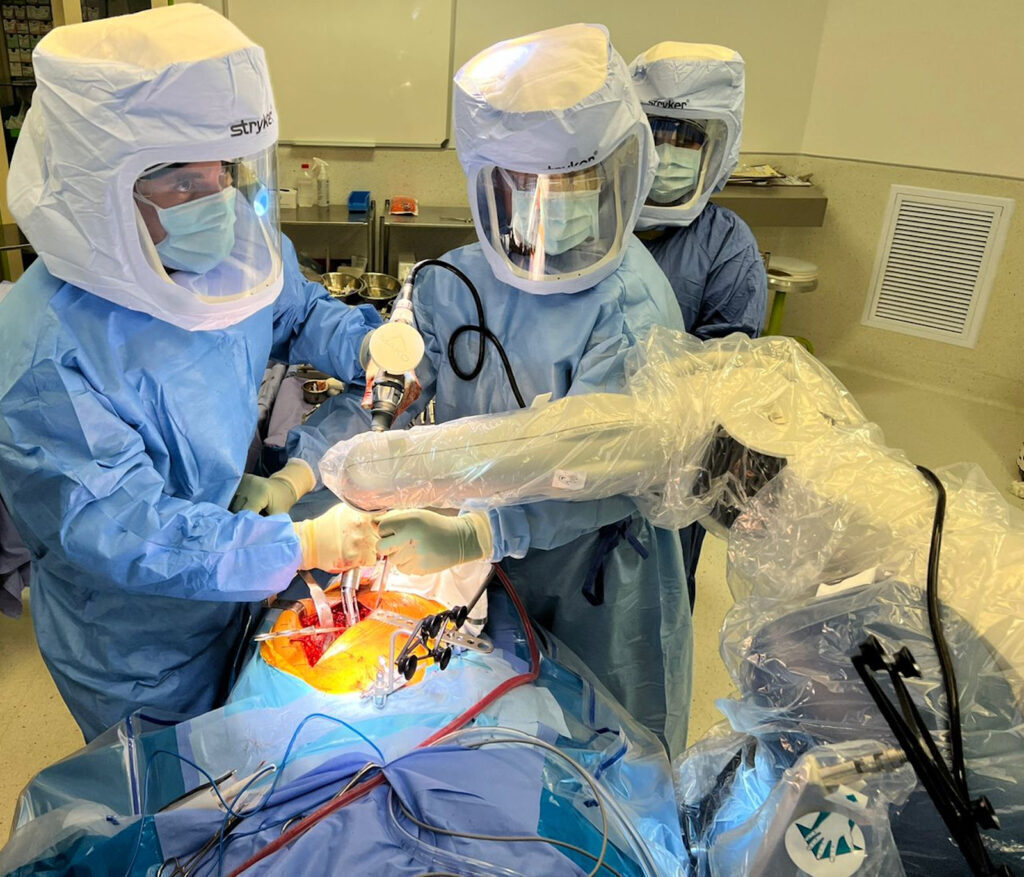It feels like every other day robots are given more and more high-profile jobs around the world. South Africa is no different. Netcare Pretoria East Hospital is using robotic technology to assist its doctors with knee and hip replacements. Robotic surgeons are a thing in South Africa now. More or less.
The Mako robotic system, made by a company called Stryker, began its work in the Netcare Pretoria East Hospital. Dr. Wian van der Merwe performed the first robotically assisted hip and knee surgeries in November last year. Since then, the procedure has become more widely available to residents of South Africa. The robot system is one of the only four Netcare facilities to offer these surgeries, with Netcare Linksfield, Pinehaven, and Blaauwberg being the other three.
At the moment, only two doctors can perform the procedures; Dr. Wian van der Merwe and Dr. Tiaan Stoffberg. Netcare says that two more doctors are busy undergoing training. This requires that doctors travel to Turkey to train with the new SmartRobotics surgical system. When their training is complete, in June, Netcare will have two more qualified surgeons ready to go.
Not taking our jobs… yet

To be clear here, the robots aren’t performing the surgeries themselves. The doctors themselves still get most of the credit. The robots are more accurately described as assistants. According to the doctors, the robot improves precision during surgery, allowing for faster recovery rates and fewer mistakes.
The robotics system offers three important features — 3D CT scan-based planning, AccuStop support, and data analytics – all in one place. This saves time and provides more accurate information to medical professionals. Both of these are factors in accurate operations and speedy recovery.
To begin its work, the robot needs a CT scan of the patient receiving surgery. With this, it’s able to develop a 3D digital map of the hip or knee, and can calculate the exact size of the implant required. It also shows the best spot for the prosthetic to be fitted in, matching up perfectly with the patient’s anatomy. The map is then used as a reference for the surgeons during the actual surgery.
Before any actual work begins, exact dimensions are pre-determined by the robot. When surgeons reach the dimensions set, the machine automatically stops cutting. This adds an element of safety to the operation, reducing the chance of damaging surrounding soft tissue and healthy bone.
“The resections achieved are extremely accurate to the surgical plan, being within a fraction of a millimetre.” says Dr Van der Merwe. “The robotic system cannot do anything without the surgeon. Rather, it helps keep the surgeon within the optimal dimensions to match the patient’s individual anatomy through the defined surgical plan.”
The importance of accuracy
While Mako seems like great technology for orthopaedic surgeons, how does the system improve the process for patients? Well, when using prosthetics, comfort can be an issue, depending on the specific patient. But when using the robotic assistant, prosthetic placement is exactly where it needs to be. This is a large factor in comfort.
Recovery time is also improved. Since the robot stops the cut at the correct moment during surgery, surrounding soft tissue isn’t subject to unnecessary trauma. This helps speed up recovery time. There’s still a human in the driving seat, but they’re being helped along by a very accurate assistant. That might be reason enough to search out one of the supported hospitals in SA. In the even you need knee or hip replacement surgery, anyway.





